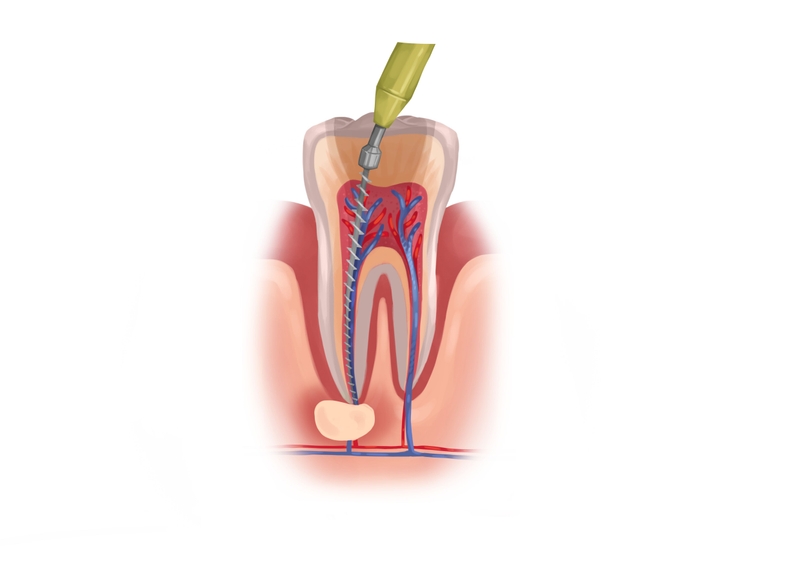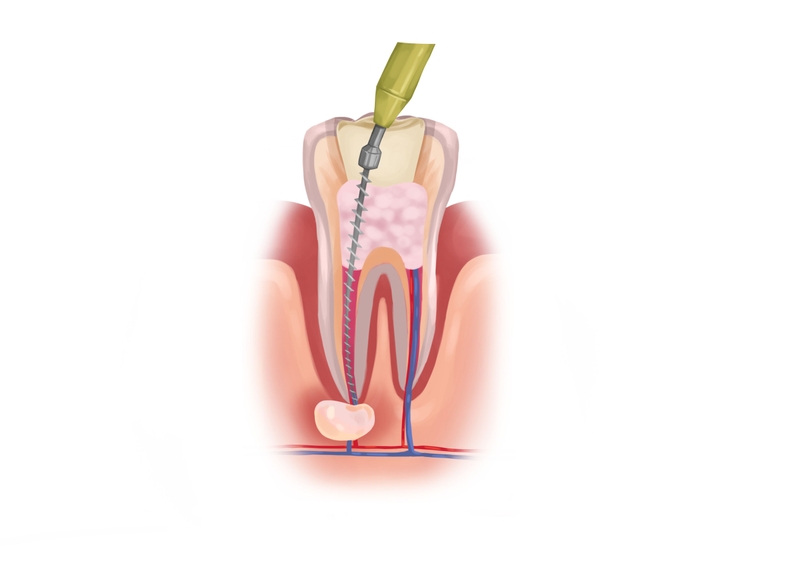- Root canal treatment is a dental procedure that aims to remove contaminated material from the tooth. This also prevents the tooth from becoming infected in the future.
- Pulsating pain, sensitivity to hot and cold foods and drinks, swelling, bleeding, or dark discoloration of the tooth may indicate a condition that you should treat with a root canal.
- If you experience symptoms such as bleeding, swelling, or pain that last longer than three days after a root canal, you should contact your local endodontist.
Don't let the cost of dental care stop you from smiling. Use Authority Dental to find an emergency dentistry clinics near you. It’s simple, secure and free.
Do you need a root canal? Here's everything you need to know.
When do you need a root canal?
Root canal treatment is often necessary if the tooth pulp becomes infected. The most common causes include traumatic injury resulting in a crack, neglected cavities, failed previous treatment, or disease.
Symptoms that should concern you include:
pulsating pain, especially when chewing or biting,
sensitivity to hot and cold foods and drinks,
swelling,
bleeding, or
darkening of the tooth.
Root canal procedure step-by-step

Picture by Authority Dental under CC 2.0 license
Root canal treatment has a bad rep in the dental world. However, it does not have to be as scary as you think. Being aware of what each step entails can make the procedure more bearable.
Before your appointment
There are a few things to remember before your procedure:
Avoid alcohol and tobacco for at least 24 hours.
Eat before leaving for the office.
Take an OTC painkiller.
Make sure you are familiar with the process.
Alcohol and tobacco may harm anesthesia, which your dentist will likely use to manage pain during the procedure. Taking a painkiller prior to your root canal treatment means less discomfort. This applies to both the procedure and the administration of the anesthetic.
Your body will take less of a hit if you have a complete meal beforehand. Your anxiety will also be lower if you know what is going to happen each step of the way. Ask your dentist any questions you may have.
Preparatory procedures
Your dentist or endodontist may want you to come in for an initial dental exam, including tests of the tooth and X-rays. Radiographs may show the extent of the damage. This is sometimes included in the cost.
You will also discuss your medical history, any medications you are taking, and the type of anesthesia that would be best.
Anesthesia
Typically, a local injection is enough to manage pain during a root canal procedure. Patients who are extremely sensitive to pain or have dental anxiety may have to be sedated. The options are oral or IV anesthetic.
If you are set on a deeper kind, you may have to prepare differently for your treatment.
Cleaning out the pulp
The tooth is opened up with a small drill. The dentist will then remove bacteria and infected matter with tiny instruments. Once he or she is satisfied that all contaminated materials have been removed, the tooth will be sealed.
Application of the sealant
This stage is similar to a regular filling. Most often, a composite is used to close off the hole, and the tooth is polished.
The other option is a dental crown. That is appropriate if much of the tooth was destroyed by the infection or if it had to be removed for proper cleaning. Dental crowns give great cosmetic results.
Root canal pain and recovery
Root canals can hurt. Mild pain after a successful procedure is normal during recovery. You can manage it with OTC painkillers. This, however, should not last longer than 3 days. If you experience any bleeding, swelling, or pain that persists, contact your local endodontist, as you may need to return for a checkup.
Aftercare is mostly about good oral hygiene—brush and floss at least twice a day. You can also use non-alcoholic mouthwash or a saltwater rinse. The latter can help reduce any swelling around the affected tooth.
When is root canal retreatment needed?

Picture by Authority Dental under CC 2.0 license
If the root canal was performed correctly and the patient adheres to the dentist’s instructions, there should be no complications. In the case of failed treatment, however, retreatment might be necessary. This can significantly increase the final cost of the RCT.
The procedure can be deemed unsuccessful if the infection is not eliminated. This means the bacteria continue to spread and attack the dental pulp. Such a situation is accompanied by persistent pain and swelling in the area for more than 3 days.
Another reason for retreatment arises if the seal is incomplete or becomes worn. The canals should be thoroughly closed off. Patients who suffer from bruxism are at particular risk of the filling coming loose. The infection then continues to spread. You may notice pain and swelling.
Moreover, it sometimes happens that cracks in the roots go undetected before the procedure. This is extremely rare, especially now, when CT scans are so accurate. Pain that persists and significant swelling are symptoms to look for. The tooth will have to be opened and the root canal redone.
Contact your dentist if you notice these signs, but he or she should be able to spot any problems during your post-op checkup.
FAQ
Who is a root canal specialist?
How long does a root canal take?
A root canal procedure commonly takes about 30 minutes to an hour. If the tooth is severely infected or has an unexpected number of canals, the procedure can take up to 90 minutes.
Is it better to pull out a tooth or root canal?
The best solution is to do whatever is possible to save a tooth. Not only is the extraction itself expensive, but the tooth should also be replaced afterwards. This can be much more costly, and you may need to consider relines or a lengthy recovery period.
Do they put you to sleep for a root canal?
Root canal treatment is almost always done with no more than a local anesthetic. Those with high pain sensitivity or dental anxiety can discuss sedation options with their dentists.
What happens if you wait too long to get a root canal?
First of all, that can be very painful. You are likely to experience swelling from the infection, which may spread to other teeth. The longer you wait, the more costly the repair will be.
What are some alternatives to root canal treatment?
Some dental professionals, mainly holistic dentists, recommend against root canal treatment. Unfortunately, the only real alternative is extraction. If you do decide to pull your tooth, or if it is damaged beyond repair, you should always choose a restoration.
Not replacing extracted teeth leads to shifting of the dentition, bone loss, loss of opposing teeth, and dietary changes. These could affect not only your oral health but also your general health. The most popular solutions are dental bridges, dentures, and implants.
References
- Procedures for retreatment of failed root canal therapy
- Alcohol and anaesthesia
- The best radiographic method for determining root canal morphology in mandibular first premolars: A study of Chinese descendants in Taiwan
- Dental Drill
- Are alcohol containing mouthwashes safe?
- Failure of endodontic treatment: The usual suspects
- Procedures for retreatment of failed root canal therapy
Jack Lawrence, DMD
Retreatments are usually done by endodontist. If they are redone by a regular dentist the price is most often the same or a little higher than the initial procedure.